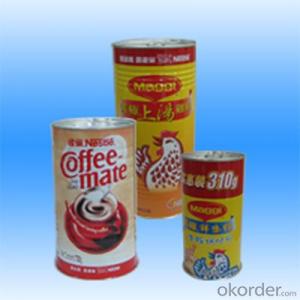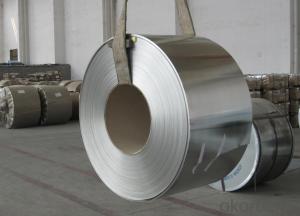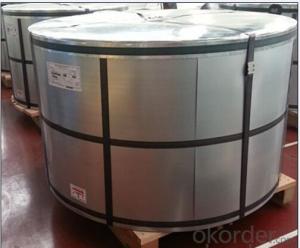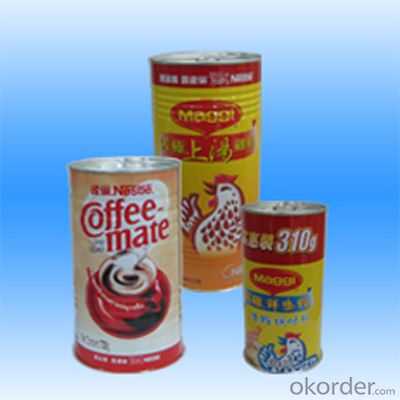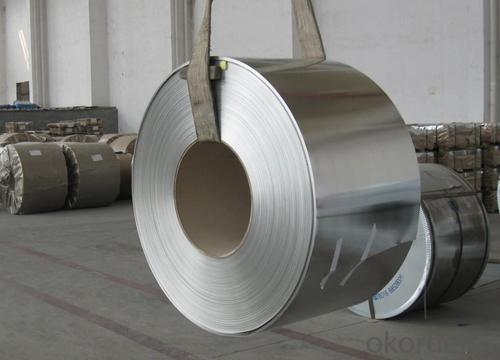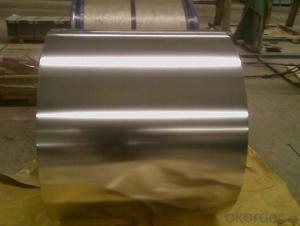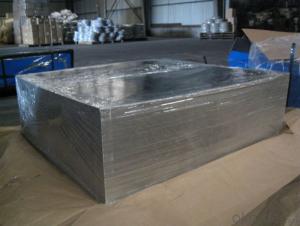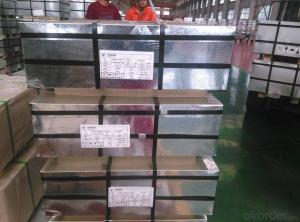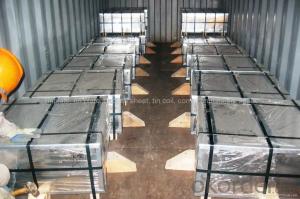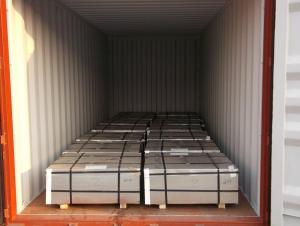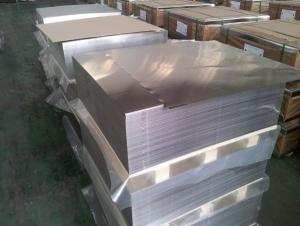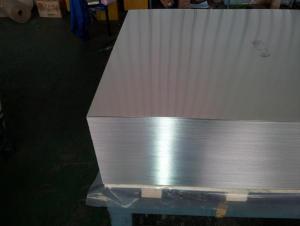CNBM Tinplate For Bottle Caps, DR, MR Material
- Loading Port:
- Tianjin
- Payment Terms:
- TT OR LC
- Min Order Qty:
- 15 m.t.
- Supply Capability:
- 50000 m.t./month
OKorder Service Pledge
OKorder Financial Service
You Might Also Like
1.Usage
Tinplate is widely used for making all types of containers, containing industrial usage such as paint can, oil can, aerosol cans etc., and food cans like milk powder cans, tomato paste can, dry food cans etc.
2. Quality
As a state owned company and a large tinplate supplier in China, our tinplate quality ranks 1st level in China, similar to Bao Steel, Posco etc.
3. Specification
standard: GB/T2520, JIS G3303, DIN EN10202
Material: MR /SPCC
Thickness available: 0.16-0.50MM
Width available: 600~1050MM
Temper grade: T1 – DR8
Tin coating: ordinary 2.8g/2.8g, 5.6g/5.6g and others
Package: sea worthy export package.
Applications: Tin can for chemicals & paint cans, industrial cans, food cans
4.our production equipments
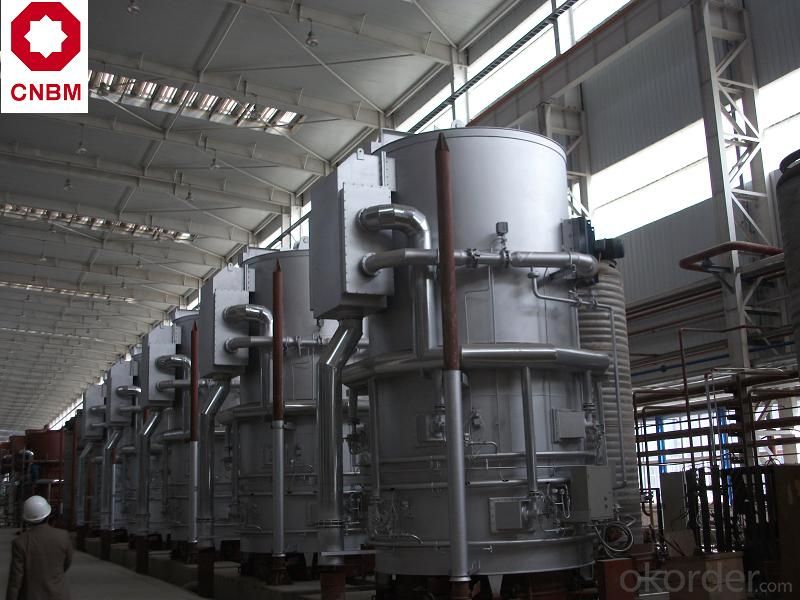
5. Our customers;
now our tinplate has been sold to more than 30 countries, including Europe countries, Gulf Area, South American, South Afric etc.
6. Our overseas markets:
Furthermore, in the year 2014, we have more than 10 overseas warehouses all over the word, located in KSA, UAE, Oman, Russia, Kuwait, Qatar, Oman, Chile, Brazil etc.
7. FAQ
a. what's the annual output?
about 500,000 tons per year.
b. where's the raw matrial from?
our hot rolled coil is purchased from Capital Steel and other state owned mill, with quite good quality.
c. how long is the delivery time?
normally for SPCC about 45~55 days, while 65~75 days for MR material
d. how to control the quality during production process?
inside our workshop, we have MES syestem. It realizes the optimization of the production procedure in the workshop. It could record each step of the whole production procedures, and if some problem appears, factory could easily found and take action, it’s quite helpful to monitor and control the quality.
- Q: How thick is tinplate?
- Tinplate typically has a thickness ranging from 0.13 mm to 0.49 mm.
- Q: Can tinplate be used for construction materials?
- Yes, tinplate can be used for construction materials.
- Q: Can tinplate be used for packaging of hazardous materials?
- Yes, tinplate can be used for packaging of hazardous materials. Tinplate is known for its excellent strength, durability, and corrosion resistance properties, making it suitable for containing hazardous substances safely. Additionally, tinplate can be specially coated or lined to provide an extra layer of protection against any potential chemical reactions or leaks.
- Q: Can tinplate be customized with embossing or debossing?
- Yes, tinplate can be customized with embossing or debossing techniques.
- Q: How does tinplate compare to plastic packaging?
- Tinplate packaging offers several advantages over plastic packaging. Firstly, tinplate is more durable and can withstand higher temperatures, making it suitable for preserving food and beverages. It also provides better protection against external factors such as sunlight, moisture, and oxygen, thus ensuring the longevity and quality of the contents. Additionally, tinplate is fully recyclable and has a higher recycling rate compared to plastic, making it a more sustainable choice. Lastly, tinplate packaging has a premium appearance that can enhance the product's perceived value and appeal to consumers.
- Q: How does tinplate compare to aluminum in terms of recyclability?
- Tinplate and aluminum are both highly recyclable materials. However, aluminum has a higher recycling rate and is often considered more environmentally friendly due to its infinite recyclability without losing its properties. Tinplate, on the other hand, can also be recycled efficiently but may require additional processing steps. Overall, while both materials are recyclable, aluminum is generally regarded as having a more favorable recyclability profile.
- Q: What are the advantages of using tinplate for stationery?
- There are several advantages of using tinplate for stationery. Firstly, tinplate is highly durable and resistant to corrosion, ensuring that the stationery items made from it will last longer. Secondly, tinplate is a lightweight material, making it convenient to carry around and use. Additionally, tinplate is easily recyclable, making it an environmentally friendly option. Lastly, tinplate can be easily decorated and customized, allowing for unique and attractive designs on stationery products.
- Q: What are the common forms of corrosion that affect tinplate?
- Tinplate commonly experiences three forms of corrosion: uniform corrosion, pitting corrosion, and tin whisker growth. Uniform corrosion occurs evenly across the surface, leading to a thinning of the tin coating. Pitting corrosion, on the other hand, creates localized holes or pits, compromising the integrity of the tinplate. Lastly, tin whisker growth involves the formation of tiny, crystalline structures that can lead to short-circuits or other electrical issues.
- Q: How does tinplate compare to aluminum in terms of properties and applications?
- Tinplate and aluminum have distinct properties and applications. Tinplate is made of steel coated with a thin layer of tin, providing excellent corrosion resistance and forming properties. It is commonly used for food and beverage packaging, as well as for decorative purposes. On the other hand, aluminum is a lightweight metal with high strength-to-weight ratio, corrosion resistance, and excellent thermal and electrical conductivity. It is widely used in industries such as construction, transportation, and electronics. While both materials have their unique advantages, the choice between tinplate and aluminum depends on specific requirements and the intended application.
- Q: Can tinplate be used as a water tower? Is hot water durable?
- Tinplate is commonly known as tin plated thin steel plate. It is a cold-rolled low carbon steel sheet or strip coated with pure tin on both sides. Tin plays a major role in preventing corrosion and rusting.
Send your message to us
CNBM Tinplate For Bottle Caps, DR, MR Material
- Loading Port:
- Tianjin
- Payment Terms:
- TT OR LC
- Min Order Qty:
- 15 m.t.
- Supply Capability:
- 50000 m.t./month
OKorder Service Pledge
OKorder Financial Service
Similar products
Hot products
Hot Searches
Related keywords
